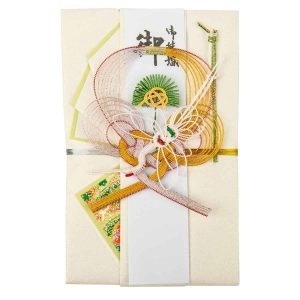Japanese New Year Celebrations
Traditional Decoration

New Years Eve
New Years Eve or Ōmisoka in Japanese is a big family event including games, TV shows and religious traditions. Celebrations begin early in the day with lots of family activities taking place and ending the day with a popular Japanese TV show on the sofa.Games
Whereas in England, a traditional family game would consist of Scrabble or Cluedo, in Japan, some of the games are a little different, here’s a list of the most common New Year’s Eve games which are played:- Takoage – Kite Flying
- Fukuwari – Similar to pin the tail on the donkey but with a face, players are blindfolded and must place eyes, nose and mouth on the face
- Sugoroku – Board games
- Honetsuki – Japanese Badminton
- Karuta – Card Games
- Koma – Spinning Tops
TV Shows
There is a popular TV show called Kohaku Uta Gassan literally translated as Red and White Song Battle where music artists perform. Unlike reality music shows, these artists have been hand-picked by the organisers to perform and it is seen as a highlight in their careers. The Japanese artists who perform are usually the most popular of the year. The show is a battle of the sexes with male solo and group artists on the white team and female solo and group artists on the red team. The programmed is on for around 4 and a half hours and finishes half an hour before midnight.Religion
Many people go to their shrines and temples at midnight on New Year’s Eve to pray. There are usually a couple of million visitors to the shrines and temples over this holiday and at some you will be waiting up to an hour in line waiting to get in. The most popular temples are usually the busiest where people are not just praying but also eating and socialising with others. At midnight, the temple bel is rung a massive 108 times. In the Buddhist belief, there are 108 human sins hence the reason for so many rings. The bell is also rung to ward off evil spirits.New Years Day
New Year’s Day or Gantan is a very busy day for the Japanese even though it is considered to be a day of rest. The day consists of a family meal, the first visit to the shrine or temple and also gift giving.Family Meal

- Kuromame (Black Soy Beans) – Good Health
- Kazunoko (Herring Roe) –Fertility
- Tazukuri (Dried Anchovies) – Bountiful Harvest
- Datemaki (Sweet Omelette mixed with Fish Paste or Shrimp) –Scholarship and Culture
- Kuri Kinton (Mashed Sweet Potatoes and Chestnuts) – Economic Fortune in the New Year
- Ebi (Shrimp) – Long Life
First Visit to the Shrine or Temple
The First Visit is known as Hatsumode and is extremely popular throughout the country. Here people discard of their lucky charms from last year and purchase the ones for the new year. People visit the shrine or temple to pray for a successful new year. Many are often seen clapping twice and tossing money into a large wooden box which symbolises them praying for a prosperous new year. Fashion at the Hatsumode varies with people wearing traditional Japanese kimonos to simply wearing jeans and a coat.Gift Giving
Gift giving on New Year is different to Christmas Gift Giving as it only really applies to children. The tradition is known as Otoshidama. Parents and grandparents give money to the children and depending on their age, some often receive around £60 per relative. The money is given in a decorated envelope known as Shugi Bukuro. Originally there was no money given, but instead rice cakes as they symbolise Gods spirit. The amount given varies depending on the child’s age and when the child has grown up, they then give money to their children and so the tradition continues.
The money is given in a decorated envelope known as Shugi Bukuro. Originally there was no money given, but instead rice cakes as they symbolise Gods spirit. The amount given varies depending on the child’s age and when the child has grown up, they then give money to their children and so the tradition continues.
Enjoy this post? Follow The Japanese Shop on Facebook or Twitter for regular updates and to learn more amazing facts about Japan. Alternatively, browse our extensive range of Japanese lucky cats on our website along with hundreds of other authentic Japanese gifts and accessories.

